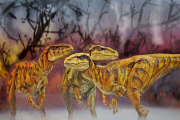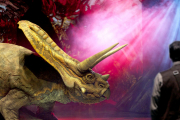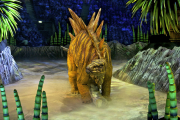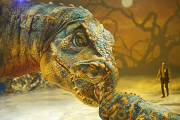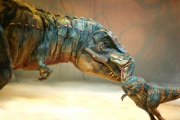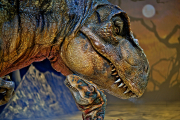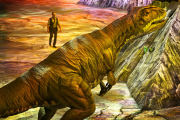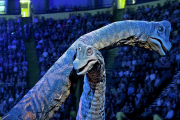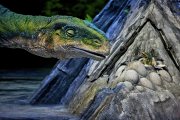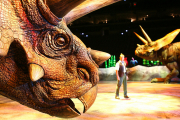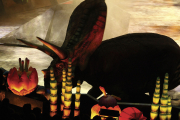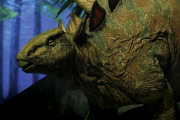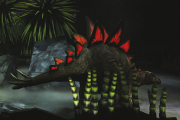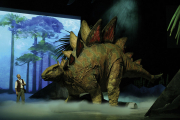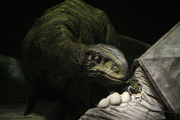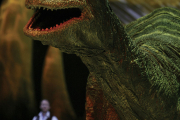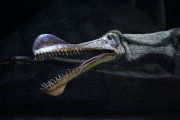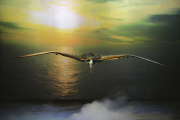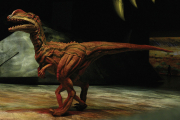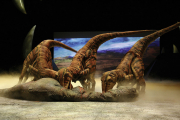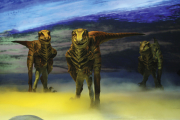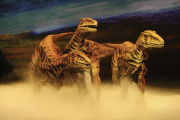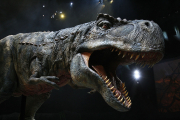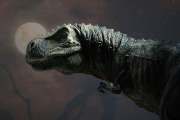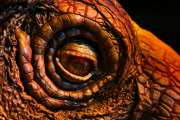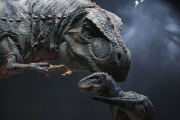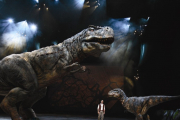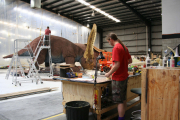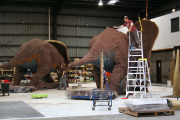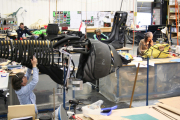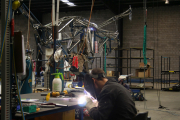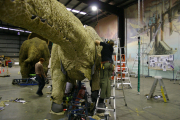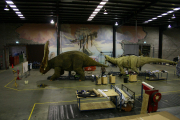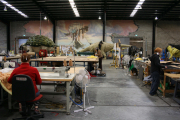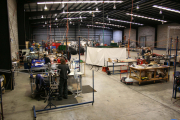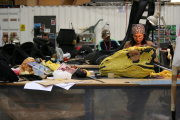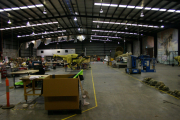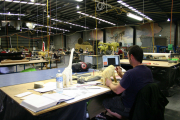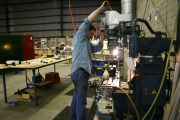Official website: http://www.dinosaurlive.com/
Dates: 2007 – 2015
Documents
Creative Team (2015)
Artistic Director – William May
Director – Scott Faris
Scriptwriter – Warner Brown
Composer – James Brett
Creature Designer – Sonny Tilders
Set Design / Projected Images – Peter England
Lighting Designer – John Rayment
Sound Designer – Peter Hylenski
Producer – Gerry Ryan, Carmen Pavolvic
Original Idea – Bruce Mactaggart
Originating Producer – Jill Bryant, Malcolm Cooke
Based on a creative concept by William May and an idea from Bruce Mactaggart
Behind the Scenes
There are 15 dinosaurs featured, representing 10 different dinosaur species.
There are 10 large dinosaurs in the Arena Spectacular which include:
- Plateosaurus which is 10ft tall x 31ft long
- Stegosaurus which is 18.5ft tall x 36ft long
- Allosaurus which is 14.5ft tall x 43ft long
- Brachiosaurus as an adult is 36ft tall x 56ft long and as a baby is 29.5ft tall x 48ft long – Ornithocheirus has a wing span of 38ft
- Ankylosaurus is 12ft tall x 34ft long
- Torosaurus of which there are two in the show, are 13ft tall x 30ft long
- Tyrannosaurus Rex of which there are two in the show (including one spare) are 23ft tall x 42 ft long.
There are five suit dinosaurs in the show which include:
- Three Utahraptors which are 8 ft tall x 14ft long
- One Baby T-Rex (including one spare) which is 7 ft tall x 14 long
- One Liliensternus which is 7.5 ft tall x 16 ft long
The Torosaurus is made from
- 433 ft of hydraulic hose
- 971 ft of fabric
- 433 ft of foam
- 53 gallons of paint
- Seven kilowatts of power from 12 truck batteries
- 1094 yards of cabling
- 24 microprocessors control movement along with 15 hydraulic rams
- Six hydraulic motors
Each large dinosaur weighs 1.6 tons a piece which is the same weight as a standard family car and runs on 6 roller blade wheels.
To operate one dinosaur, it takes a team of three people including
– One Driver; and
– Two Voodoo Puppeteers. One operates the head and tail gross motion while the other is in charge of minor movements including the mouth, blinking and roars
Walking With Dinosaurs – The Arena Spectacular has a cast of 65 performers and voodoo operators.
The 15 Cast include six suit performers, two actors and seven puppeteers.
The 45 Crew include nine dinosaur drivers, three person skins/dressing staff, and multiple engineers, lighting and sound personnel, carpenters, riggers and workers in audio visual and automation.
About the Creature Technology Company and the show
Background Information (from the Education pack)
Walking_with_Dinosaurs_Education_Pack
‘Walking With Dinosaurs took six years to create. The show requires 150 people to stage, including a spectrum manager to control radio frequencies used to operate the dinosaurs. Twenty- ve tractor-trailers are needed to transport the 116,000 pounds of scenery, lights and sound equipment, and the 30 tons of dinosaurs’. The New York Times
The idea for Walking With Dinosaurs started in 1996. At the time it was a science TV producer at the BBC and knew they were looking for a big series about palaeontology. In particular they wanted it to appeal to the widest possible audience, to bring the subject alive. This was only a couple of years after Jurassic Park had come out which set a new bench mark in dinosaur imagery, so rather naively I suggested we use the same techniques to make a series of prehistoric natural history programmes. I had an image of a small raptor trying to catch dragon- ies in the evening light of a Cretaceous summer – one of these extraordinary animals doing something quite nor- mal and natural. Overall the aim was to create an immersive experience that was both spectacular and informa- tive.
As I investigated further I realised how dif cult it would be to achieve. The rst quote I got for creating these computer dinosaurs was 10,000 US dollars a second which was way beyond a TV budget and Jurassic Park had only about nine minutes of dinosaurs in it, we needed three hours. So my initial ideas concentrated heavily on the insects, plants and landscapes of the Mesozoic with the occasional dinosaur thrown in. Fortunately my search
of UK graphics companies brought me to Framestore where I met Mike Milne. He understood exactly what I was trying to achieve and showed a exibility and imagination that allowed us to bring down the cost of animation. Suddenly, thanks to Mike and his team, I could have a programme full of dinosaurs.
We shot a six minute pilot among some old Mediterranean pines in Cyprus and this was enough to persuade the BBC, Discovery and BBC Worldwide to fund the series. It was essential that this vision of the past was as accu- rate as possible even though it could only ever be based on scienti c conjecture. For six months we did nothing but research – carefully choosing the moments in the Mesozoic that scientists knew the most about.
To create a complete picture of the past we needed all the information we could get. Then between the summer of 1997 and winter 1998 producer Jasper James and myself took a small production crew to some of the last places on Earth where ancient plants and trees still survive so we could capture the right backgrounds for our dino- saurs. These small patches of untouched wilderness are some of the most beautiful places on the planet and we were truly privileged to spend weeks in them lming. These included the araucaria forests in New Caledonia and southern Chile, the redwood forests in California, the beech gap on South Island New Zealand and the Labyrinth in Tasmania.
While the lm crews sat in southern Paci c forests shooting lots of pretty shots of landscape with nothing in it, Mike Milne and his team of animators started work on the dinosaurs. With a lot of advice from Palaeontologists we built accurate models of almost 20 dinosaurs (and several other weird and wonderful creatures from the same time) and then scanned them into the computer. The team then faced a huge task. They were attempting some- thing that had never been tried before even in Hollywood – hours of high quality photoreal animation. The rst show took a year to animate but once Mike’s team have overcome their teething problems, the last ve only took six months.
Once our creatures were up and running they looked magni cent and suddenly the era came alive – walking, run- ning, feeding and ghting, a whole menagerie of creatures many of which have never been seen outside the pages of scienti c journals. When I rst saw the images of our polar Allosaurus wandering among the Podocarps of New Zealand I knew we had created something quite special. The six half hour programmes were nished and rst broadcast in October 1999 on the BBC1.
TIM HAINES
Creator and BBC Series Producer Walking With Dinosaurs
See also
How to Train Your Dragon Live Spectacular

